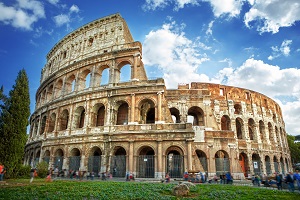
Pollution in the air is not only harming human health and the environment but is also degrading surfaces of historical buildings and monuments. The impact of dirty air on materials is enormous and can destroy our cultural heritage, an important component of our individual and collective identity. In addition, corrosion and soiling as a result of air pollution can lead to severe economic losses. UNESCO World Heritage sites are of outstanding universal value and therefore highly frequented by tourists. Damage to these sites caused by dirty air hence entail high maintenance and restoration costs.
A recent study (Report 86 UNESCO Call for data Part III) developed in the frame of the International Cooperative Programme on Effects of Air Pollution on Materials, including Historic and Cultural Monuments (ICP Materials) under the UNECE Convention on Long-range Transboundary Air Pollution evaluated risks of potential damage and associated costs due to air pollution for 21 UNESCO World Heritage Sites (see details in the study) in six countries (Croatia, Germany, Italy, Norway, Sweden and Switzerland).
Taken together, the twenty-one cultural heritage sites included in the study have a total external surface area of about 430,000 m2 and cover a wide range of materials (natural stone, artificial stone, copper, bronze, glass and others) as well as a wide range of surrounding environmental conditions.
The study finds that the total annual cost of damage attributable to air pollution varies depending on the surface material, the pollution level and the meteo-climatic conditions, ranging from 0 to around 50€ per m2 per year. While the cost per square meter might seem little, the total annual cost of maintenance and restoration works attributable to air pollution for a given type of material and a specific object of cultural heritage depends on the stock in m2 of material at risk. Looking at the total costs, these are indeed significant: for example, the total annual cost of maintenance work from soiling of the limestone surface of the Colosseum in Rome, Italy, (with an area of 19,450 m2) was estimated to be about € 680,000 per year, the annual cost due to the corrosion of the Speyer Cathedral’s copper roof (with an area of 7,800 m2) in Germany was estimated to be €39,900 per year, and the cost of cleaning the glazing of the Royal Palace of Caserta in Italy (with an area of 17,400 m2) was estimated to be about €94,000 per year.
Overall, the effects of atmospheric pollution on the materials of historic and artistic monuments appear more intense in the Mediterranean countries, in particular in Italy, than in countries upper north.

